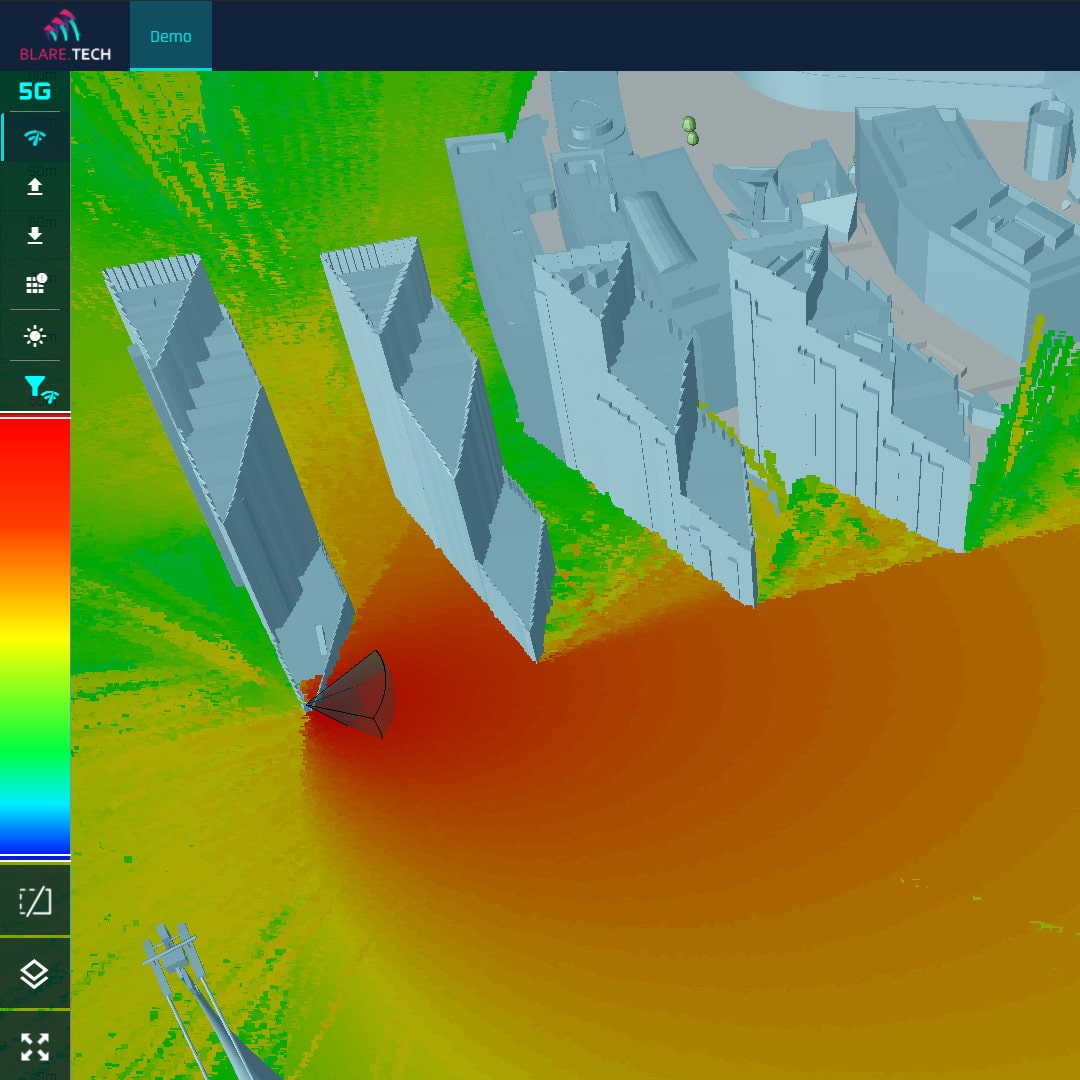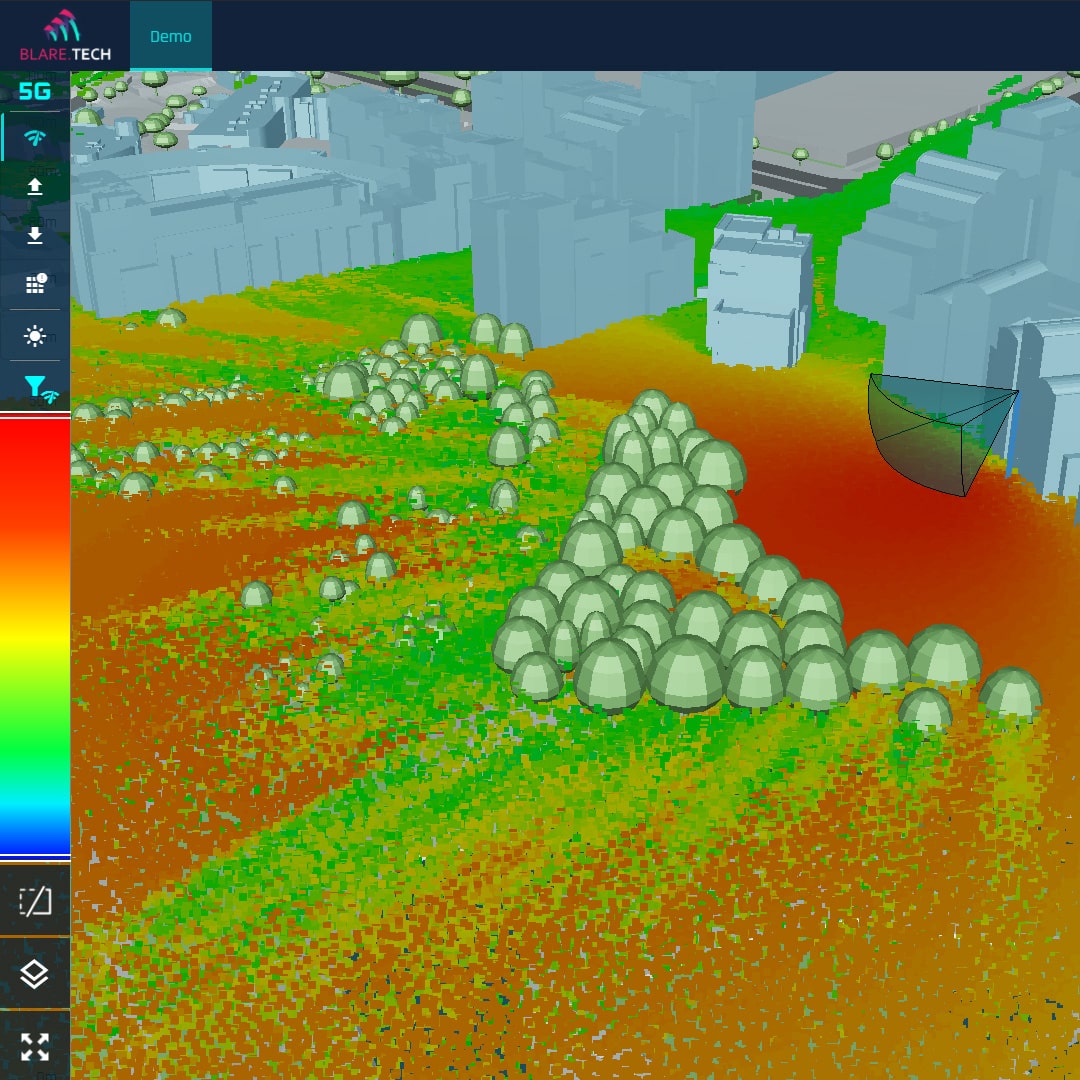-1.jpg)
Blare Technologies implements a project co-financed from European Funds:
Development of an innovative tool for the propagation and analysis of radio waves of the 5G network, taking into account the characteristics of millimeter waves and dynamic factors in a detailed digital urban environment, using the proprietary computing engine in the voxel-space.
The aim of the project is to develop an application in the form of a 5G network planning platform that uses a virtual city model to calculate wave propagation.
Co-financing from Europen Funds - PLN 4 457 294,85
5G networks require a completely different approach than previous standards and millimeter waves (mmWaves) are the reason for it. They’re enabling incredible data throughput, but the problem is, their range is much shorter, and they’re more influenced by transmission environment, which makes implementation much more complicated and costly. The goal of our project was to make 5G network planning much more manageable and efficient. In order to achieve it, we created a cloud-based simulation tool in voxel space with a precisely recreated 5G mmWave propagation model.

Compared to the 4G/LTE standard, mmWaves have a significantly shorter range. That alone requires a much narrower arrangement of transmission antennas. The other problem is their susceptibility to transmission environment. Factors that weren’t an issue previously, like trees, road traffic or weather, are a serious challenge to mmWave 5G network performance and stability.
Because of those characteristics, network planning tools that were sufficient before, are completely ill-suited for the new standard. What are the main requirements for the new generation network planning tool?
Cost-effective planning of 5G networks requires an accurate mmWave propagation model, but the tool must also take into account factors such as:
And much more, depending on the specific area. Because of it, there’s no possibility to create a universal blueprint for 5G networks. Efficient planning requires a tailormade solution, and that’s the next phase of our project.

Knowing how mmWaves behave and what variables can impact their propagation is just a first step to solving the 5G network planning issue. Now the key is to use the data in a real spatial context. That’s where Digital Twin technology steps in.
Digital Twins are digitally created representations of reality, which are continually updated in real-time. They can be objects or buildings, for example, but in the case of network planning, they would be entire areas or facilities, like a city district, factory, mine, or a port.
Our tool precisely recreates pieces of reality in a 3D virtual environment. After the Digital Twin is created, we can run simulations and test different planning scenarios thanks to our accurate mmWave propagation model. We are able to simulate the influence of various conditions, like heavy rain or dense road traffic, or test the network’s efficiency in case of higher demand. You can read more about the process in our articles about the creation of Digital Twin in Hervanta, Finland, and the LuxTurrim5G project.
Another key aspect is the accessibility of the tool and easy creation of Digital Twins. Our solution is entirely cloud-based, which means we are fully responsible for hosting and computing power. It is delivered in a Software as a Service model.
Additionally, we ensured seamless development of Digital Twins for the most popular formats, such as IFC, DWG, or CityGML.

Demand for fast and reliable connectivity is growing incredibly fast, and 5G revolution is right around the corner. New standard provides much faster bandwidth and is potentially much cheaper to implement than fiber networks, especially for industrial purposes. 5G networks will also play a significant role in the development of many Smart City solutions, which require fast connectivity.
Having a better understanding of mmWaves and creating an accurate propagation model was one of the biggest obstacles on the way to a true 5G revolution. Our tool solves this, and a few other issues at the same time.
// See more projects in category
© 2022 Blare Technologies. All rights reserved. Privacy Policy